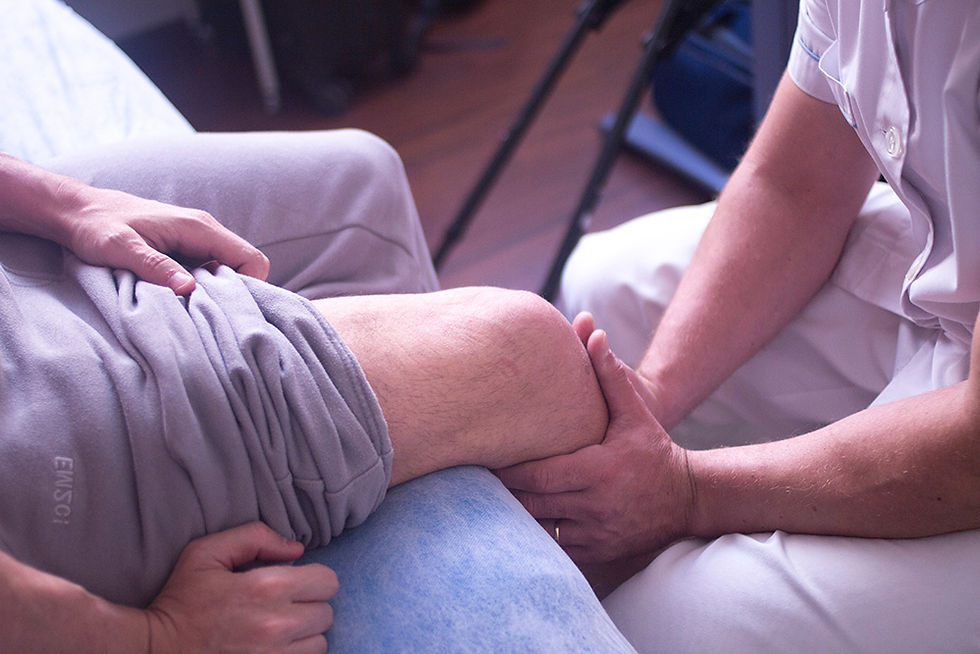Vestibular Rehabilitation and Physical Therapy
- Vail-Summit Physical Therapy
- Jun 28, 2023
- 2 min read

The vestibular system is the part of your inner ear that communicates information about motion, spatial orientation, and head position to the brain. Vestibular rehabilitation therapy (VRT) is a form of physical therapy that treats vestibular disorders that can impact your balance and cause dizziness.
What Does Vestibular Therapy Treat?
The vestibular system is composed of three main components:
The inner ear organs
The vestibular sections of the midbrain and cerebellum
The vestibular nerve, which connects the inner ear to the brain
Together, these sections of your brain and inner ear measure movement and head positioning and communicate that information to your eyes and body, helping you react to the world around you.
When an injury or disorder affects the vestibular system, the signals between your inner ear, brain, and body can get muddled. This can result in the following issues:
Vertigo
Dizziness
Lightheadedness
Tightness, stiffness, and pain in the neck
Balance issues
Headaches
Double vision
Brain fog
Patients experiencing these symptoms are often diagnosed with one of the vestibular conditions listed below:
Post-Concussion Syndrome
Traumatic Brain Injury
Benign Paroxysmal Positional Vertigo
Vestibular Migraine
Vestibular Neuritis
Unilateral Vestibular Hypofunction
Vestibular deconditioning
Mal de Debarquement Syndrome
Meniere’s Disease
Cervicogenic Dizziness
Persistent Postural Perceptual Dizziness
In the majority of cases, a vestibular disorder is permanent. VRT is an exercise-based program that trains the brain to rely on alternative signals to restore vestibular balance.
How Vestibular Rehabilitation Therapy Works
VRT aims to teach the brain to compensate for the loss of vestibular input with other senses. At Vail-Summit Physical Therapy, our expert team of physical therapists specializing in vestibular disorders will design a customized exercise plan that addresses your unique problem.
Our physical therapists will review your medical history during your first appointment and conduct a physical evaluation. This could include assessing the following:
Balance
Leg Strength
Flexibility
Gait
Visual Stability
Visual Mobility
Neck Mobility
Neck and Arm Strength
Inner Ear Function
Although the specific exercises will depend on the particular condition and goals of the patient, there are three typical exercises in VRT. These are:
Habituation Exercises: Treats dizziness that occurs when the patient moves or changes head positions. These exercises train the brain to ignore abnormal vestibular signals.
Gaze Stabilization: Help improve eye control for patients who experience erratic vision during head movement.
Balance Training: Improves steadiness and reduces symptoms that cause balance issues, allowing patients to return to their daily activities.
VRT is an outpatient form of physical therapy. Your team at Vail-Summit Physical Therapy will help educate you and your caregiver on your vestibular disorder and prescribe at-home exercises as part of your rehabilitation program.
Vestibular Rehabilitation Therapy Near Me
Vail-Summit Physical Therapy has healthcare professionals specially trained in assessing and treating vestibular disorders. Serving our Summit County and Eagle County communities out of four conveniently located clinics, we work with our patients to get them back to the activities they love.
Schedule a consultation today to discuss your vestibular disorder and how Vail-Summit Physical Therapy can support you in your recovery.




Comments